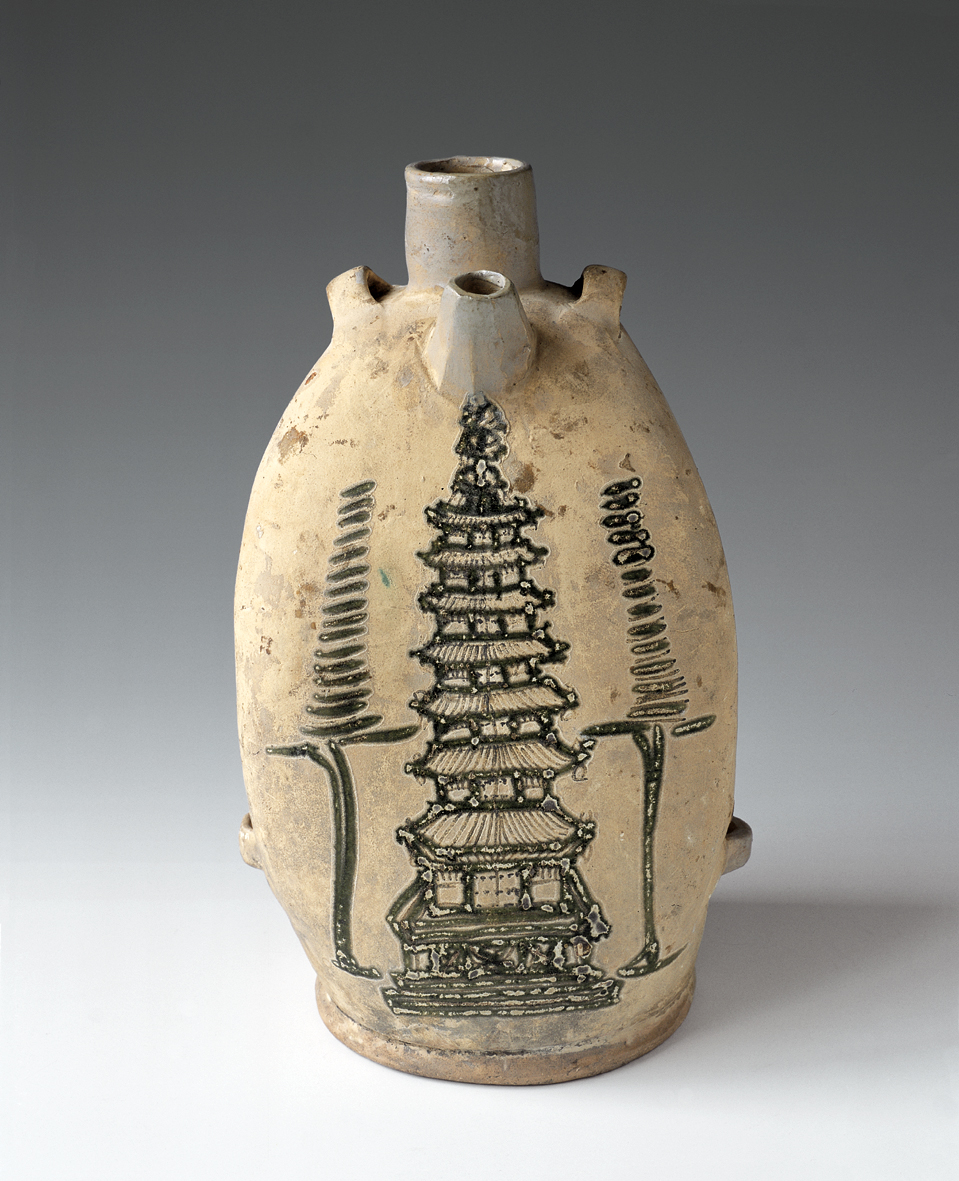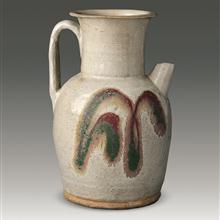Dimensions: Height: 24.8cm Diameter at Mouth: 3.4cm Diameter at bottom: 11.3cm
This is a portable wine ewer with a small opening, flat belly, diamond shaped short spout in the front and a handle in the back. The shape is between that of a ewer and a vase. There are two holes on the two sides that were for attaching string. A green colored seven-story pagoda rising to the clouds is painted in the middle of spout, while on the two sides there are lofty towering trees, which altogether creates a spectacular view— “The famous mountains in China, without exception, have deeply influenced by the monks.”
Chinese Buddhist pagodas originated in India. After Buddhist pagodas came to China, their construction adopted the style of Chinese architecture. Initially, pagodas used to stand at the center of the temple with followers worshipping around it. After the Tang Dynasty, temple halls gradually replaced pagodas.
Pagodas were composed of 4 parts. Starting from the bottom and going up, there is an underground palace, foundation, body and roof. The underground palace is a unique part of Chinese architecture, which was greatly influenced by the concept of burial worship in ancient times. The foundation refers to lower parts of pagoda. The pagoda body is the main part of pagoda and varies according to pagoda type. Floors of the pagoda are counted off in odd numbers. Before the Tang Dynasty, the ground of each floor was square-shaped. This was replaced by octagon and dodecahedron shaped floors in the Song Dynasty. The roof was the most important part of the whole pagoda. The wheel of Dharma in the roof was a symbol of Buddha which is honored by Buddhists. The number of wheel of Dharma is also counted off by odd numbers and does not go beyond 13.
The pagoda on the ewer is Chinese in style with a square foundation at the bottom and Ta sha on the top, this is an important tool for researching Buddhist pagodas of the Tang Dynasty.





